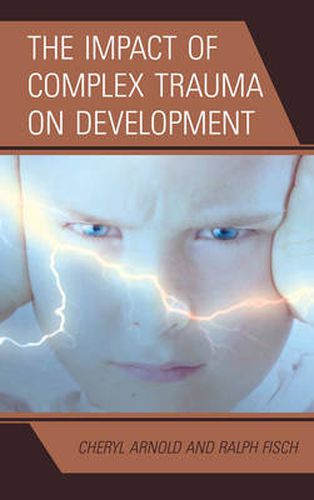Readings Newsletter
Become a Readings Member to make your shopping experience even easier.
Sign in or sign up for free!
You’re not far away from qualifying for FREE standard shipping within Australia
You’ve qualified for FREE standard shipping within Australia
The cart is loading…






The Impact of Complex Trauma on Development describes what happens cognitively and emotionally, behaviorally and relationally, to people who are repeatedly traumatized in childhood. Part One brings together trauma theory with a number of theories of human development. It directly addresses and describes developmental pathology and its origins. Through powerful examples, it conveys to the reader the pain and destruction caused by ongoing trauma, abuse, and continuous stress. Part Two, written from the perspective of a clinician who has worked extensively with traumatized children and adults, is primarily directed to mental health professionals and graduate students. These chapters are devoted to describing how to recognize the pathological consequences of trauma and how to intervene and remediate these developmental deficits. The overarching theory is psychoanalytically-based and developmental, but other treatment approaches are integrated into the therapy when they are developmentally and therapeutically appropriate. The text raises important questions related to the development of the self, its relationship to therapy, and the diagnosis and treatment of complex trauma in children, adolescents, and adults.
$9.00 standard shipping within Australia
FREE standard shipping within Australia for orders over $100.00
Express & International shipping calculated at checkout
The Impact of Complex Trauma on Development describes what happens cognitively and emotionally, behaviorally and relationally, to people who are repeatedly traumatized in childhood. Part One brings together trauma theory with a number of theories of human development. It directly addresses and describes developmental pathology and its origins. Through powerful examples, it conveys to the reader the pain and destruction caused by ongoing trauma, abuse, and continuous stress. Part Two, written from the perspective of a clinician who has worked extensively with traumatized children and adults, is primarily directed to mental health professionals and graduate students. These chapters are devoted to describing how to recognize the pathological consequences of trauma and how to intervene and remediate these developmental deficits. The overarching theory is psychoanalytically-based and developmental, but other treatment approaches are integrated into the therapy when they are developmentally and therapeutically appropriate. The text raises important questions related to the development of the self, its relationship to therapy, and the diagnosis and treatment of complex trauma in children, adolescents, and adults.